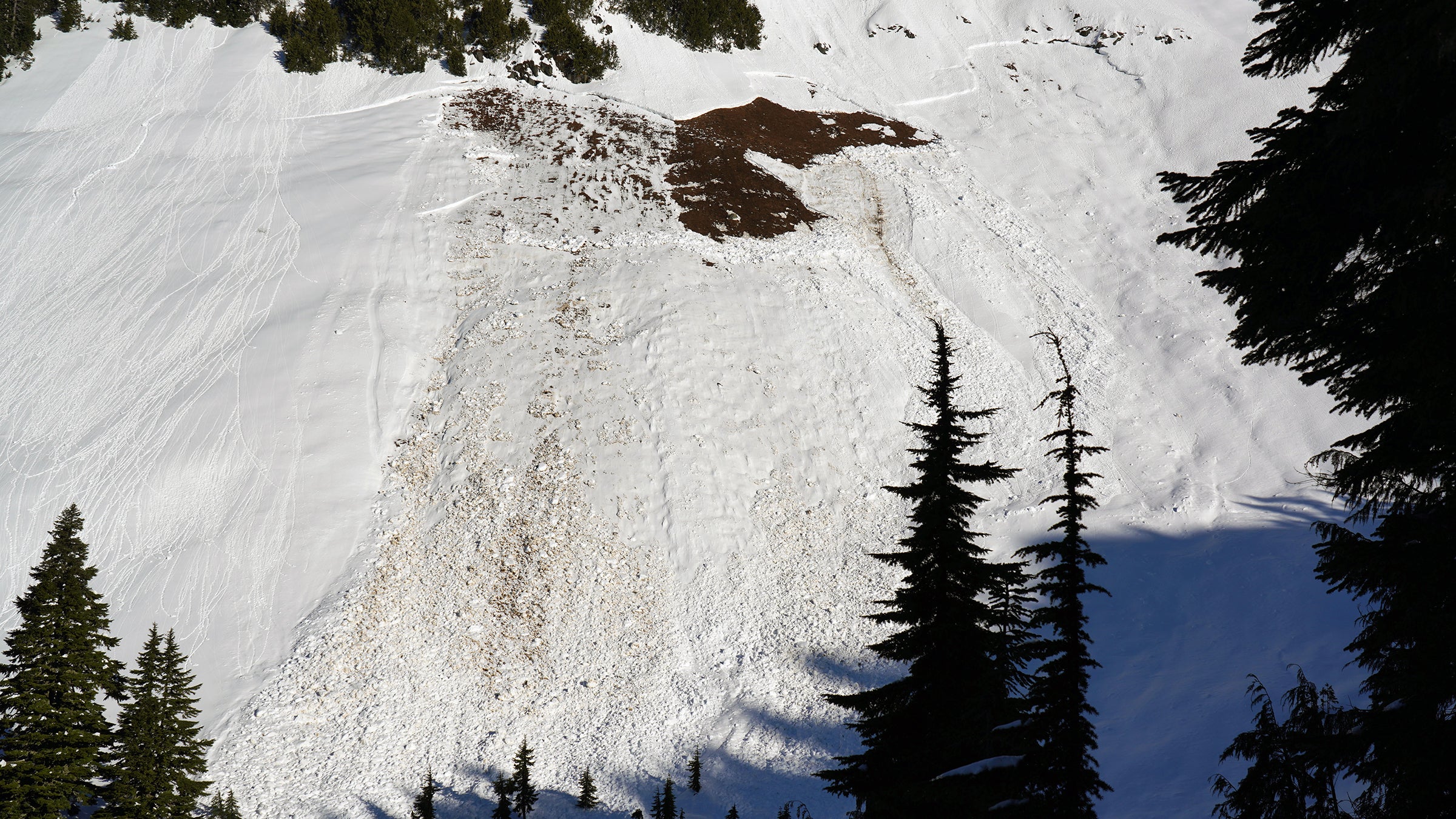This Avalanche Season Just Keeps Getting Worse

An avalanche in Washington in December, 2020. (Photo: Martin Bravenboer [CC BY 2.0])
It was one of the worst weeks in American avalanche history. On the first of the month, an avalanche swept away 4 experienced backcountry skiers in a gully near Silverton, Colorado; 3 of them, buried up to 20 feet deep, didn’t survive. On February 3, searchers from the Alaska Mountain Rescue Group discovered the bodies of 3 climbers and evidence of a slide in Chugach State Park, a day after they had been reported missing. Then, on February 6, an avalanche in Utah’s Wilson Glade zone buried eight more, with four fatalities.
Add in individual incidents in Montana, Colorado, New Hampshire, and California, and the US saw 14 confirmed avalanche deaths in one six-day span. On Instagram, the Colorado Avalanche Information Center (CAIC) said it was the most fatalities in a single week since 1910, when an avalanche killed 96 people in Wellington, Washington.
Rescue and avalanche professionals have been speculating about the possibility for a rise in avalanche incidents since the Covid-19 pandemic began. After Colorado shut down resorts last spring, Colorado Sun writer Jason Blevins reported that ski shops around the state were selling out of backcountry gear; In March, a video from Loveland Pass, one of the state’s most popular and accessible backcountry zones, showed dozens of cars lined up on the side of the road.
Despite worries about underprepared new skiers heading into the backcountry, the evidence suggests that it’s actually mostly experienced skiers who are getting caught. In a report published last November by the CAIC, authors Ethan Greene and Spencer Logan analyzed the education and experience levels of backcountry travelers involved in avalanches last spring. They found that, while beginners were no more likely to trigger a slide after the pandemic began than before, the proportion of avalanche victims with advanced backcountry experience increased.
While it’s impossible to say for certain what factors are putting seasoned backcountry travelers in harm’s way, Greene and Logan speculated that experienced skiers may be heading further into the backcountry in order to escape the booming crowds.
“As recreation increased after pandemic closures of ski areas and other activities, easily-accessible areas became crowded and tracked up,” the pair wrote. “More skilled recreators used their skills to push into less-familiar terrain or explore new areas.”
Besides the human factor, some regions are dealing with unusually dangerous snowpacks this year. In Colorado, the state that consistently leads the country in avalanche deaths, small, early-season storms followed by fluctuating temperatures late last fall set up a weak layer deep in the snow that has made it easier than usual to trigger avalanches.
In a Facebook post, American Avalanche Association board member Jake Hutchinson said that over the past two years, it seems like Avalanche educators and forecasters’ safety warnings have been “missing the mark.”
“I don’t have the answers. It isn’t closing access or more signs. It isn’t more apps and gadgets and it isn’t over dramatized ‘scared straight’ type videos and forecasts,” Hutchinson wrote. “As the backcountry explodes, more accidents will occur, [it’s] just the law of averages.”
While there are no guarantees in the backcountry, making sure you have the right education and equipment for the terrain you plan to travel through can help you stay safe. Consider taking an avalanche awareness or AIARE 1 class with a qualified instructor, and make sure to check your local avalanche forecast before you head out.